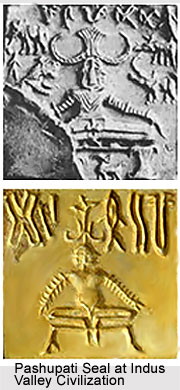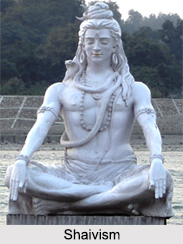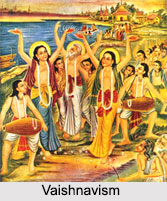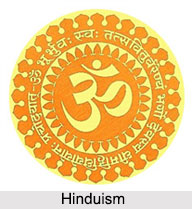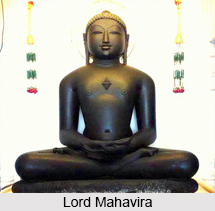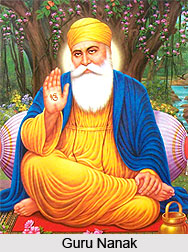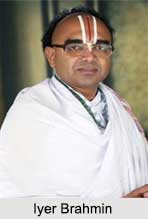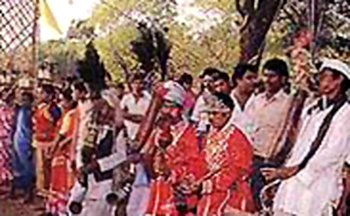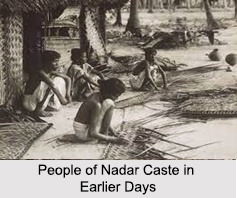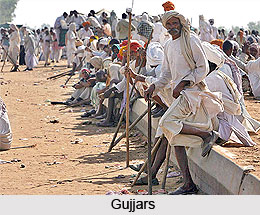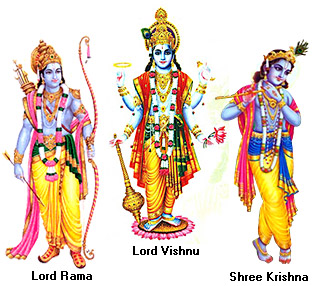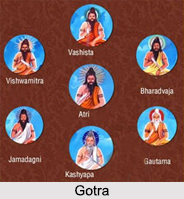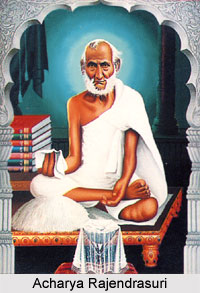 Acharya Rajendrasuri was a major reformer of 18th and 19th century in Shvetambar denomination of Jainism. He served as the leader of the Tapa Gachchha in 1880. He lead a movement to restore orders of wandering monks, leading to near extinction of the Jain Yati institutions. Later on he also helped in restoring shraman sanstha by reopening of Agam gachchha or Samakit gachchha. It is now known as "Tristutik" gachchha. He vehemently opposed the worship of other Gods and Goddesses apart from Jain Tirthankars. Acharya Rajendrasuri is also credited with writing many texts on Jainism. The most famous text is "Aabhidhan Rajendra Kosh", which is only one available encyclopaedia of Prakrit, Sanskrit, and Pali words used in Jainism.
Acharya Rajendrasuri was a major reformer of 18th and 19th century in Shvetambar denomination of Jainism. He served as the leader of the Tapa Gachchha in 1880. He lead a movement to restore orders of wandering monks, leading to near extinction of the Jain Yati institutions. Later on he also helped in restoring shraman sanstha by reopening of Agam gachchha or Samakit gachchha. It is now known as "Tristutik" gachchha. He vehemently opposed the worship of other Gods and Goddesses apart from Jain Tirthankars. Acharya Rajendrasuri is also credited with writing many texts on Jainism. The most famous text is "Aabhidhan Rajendra Kosh", which is only one available encyclopaedia of Prakrit, Sanskrit, and Pali words used in Jainism.
Early Life of Acharya Rajendrasuri
Acharya Rajendrasuri was born on 3rd December, 1827 at Bharatpur, Rajasthan. He was born into a household of business man named Rishabhdas Parakh who named him Ratna Raj. He had such a brilliant grasping power that helped in acquire all the knowledge by the age of twelve. He had an inclination towards religious life hence he soon renounced the corporeal life and was initiated as Jain yati by Hemavijayaji at Udaipur on Vaishakh shukala. He was now known by the name Ratnavijay. Under the tutelage of the well-known yatis of the age, Acharya Pramodsuri and Jain Monk Sagarchandji, Ratnavijay acquired profiency in Jain Holy Scriptures, doctrine, literature, grammar, rhetoric, lexicography, etc.
Ascetic Life of Acharya Rajendrasuri
Jain Acharya Dharanendrasuri was so much impressed by the profound scholarship of Rajendrasuri that he appointed him his daftari. He was given the job of teaching the groups of yati followers. After some time Ratnavijay became disgusted with the disgusted with the royal and luxurious life of Dharanendrasuri, as it was against the Jain tenets of non-possession and ahimsa. Thus in 1864 A.D. Rajendrasuri left Dharanendrasuri. This proved to be a turning point in the life of Rajendrasuri.
Rajendrasuri raised his voice against the luxurious life of the Jain yatis. He condemned about their possession of luxurious commodities and insisted upon them to lead a pious ideal life in accordance with the tenets laid down by Jain Tirthankaras and Jain Holy Scriptures. He also issued nine-point manifesto known as Nav-kalama explaining the significance of his nine tenets of reform that the Jain yatis needed to follow. It was a vigorous attempt to reform the institution of Jain yati and place it on sound, simple and judicious tenets and get rid of its age old traditions and superstitions.
With time the thoughts and attempts of Rajendrasuri were eventually accepted though it met with certain oppositions in the beginning. His nine-point manifesto was recognized by the leading yatis and Jain monk of the age and even Acharya Dharanendrasuri. The Jain yatis thus gave up their corporeal life as well as their princely symbols like silver rods, chanwar, palkhi, arms, etc. to the Jain temples. All of them took the solemn oath of leading a life of purity, simplicity, celibacy, non-possession, ahimsa, teaching and preaching. Thus a new life of revivalism was infused in them. He opposed worship of other Gods and Goddesses in spite of Jain Tirthankars.
Rajendrasuri did not end at the reformation of the Jain yati institution. His next achievement was restoration and reconstruction of Jain temples and installation of Jain images. He also established different socio-religious organizations for the upliftment of the Jains and propagation of Jainism. He travelled to different places in Rajasthan, Gujarat, Malwa, etc. teaching, preaching and infusing new spirit of the age amongst the people. Many people became attracted to him because of his appealing discourses that he delivered in simple dialects of the people, the common spoken languages of the masses, - Malwi, Gujarati, Marwari, etc.
He inspired the Jain monks to study profoundly the Jain Holy Scriptures. He himself devoted to the profound study of Jain works. He was bitterly opposed to the storage of Jain works in isolated places; he eagerly desired to bring them to light for the propagation of Jainism. He himself wrote collected and edited certain prominent Jain works. He compiled the celebrated Jain encyclopedia "Abhidan-Rajendra Kosh". It is a monumental work in seven volumes with more than 90 thousand pages. On the 21st December Friday 1906 AD., Acharya Rajendrasuri laid down for the Moksha Prapti till death in a still Samadhi.
